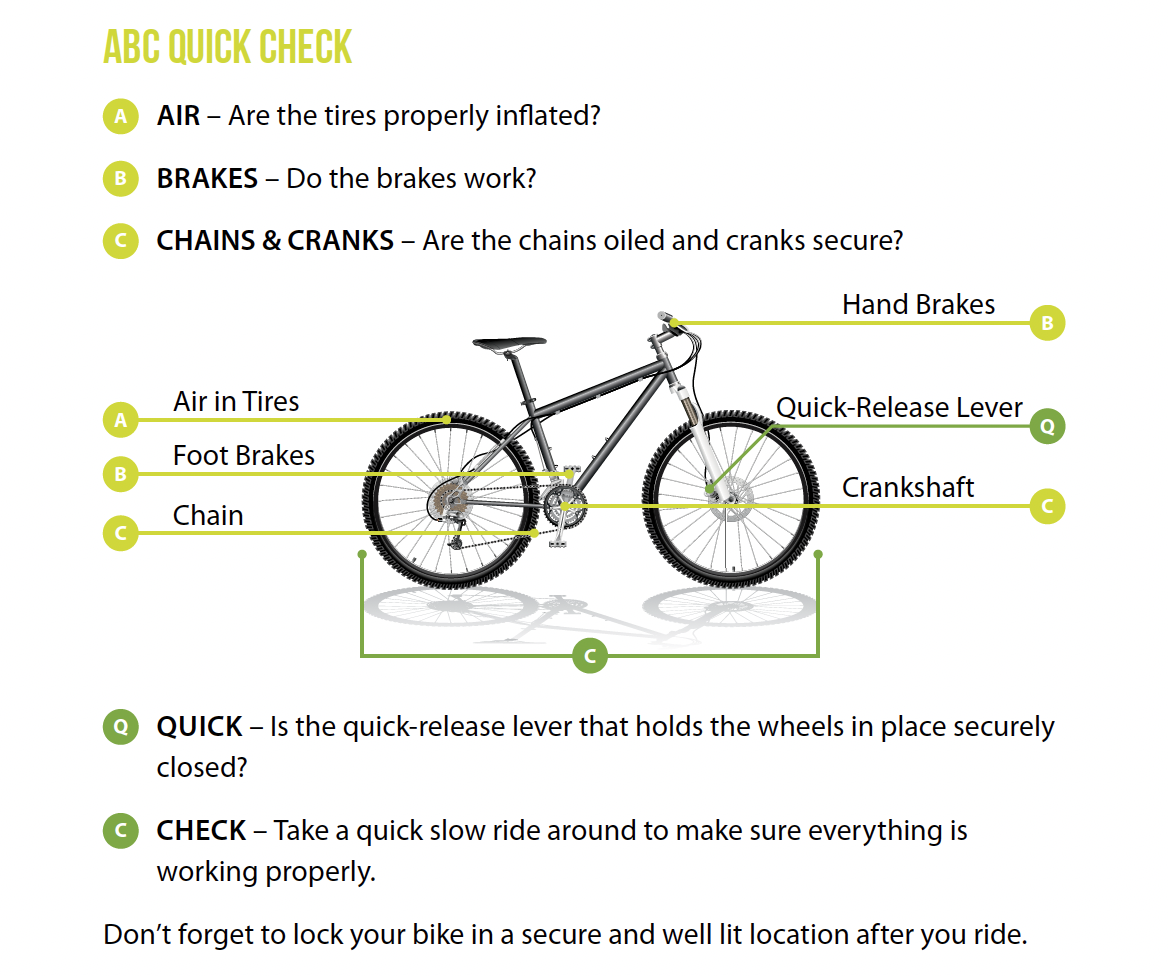Safe Cycling - Tips from Stanford Medicine
Written as a guest blog from Stanford Medicine
Following safe bicycling practices keeps you safe — it also protects new, young cyclists who look to you as a role model. Demonstrating safe bicycling today may influence future cyclists for years to come.
Stanford Medicine is a strong supporter of cycling and other sustainable transportation methods for our staff and all members of the community. Stanford Medicine Transportation Services provides bicycling resources and educational programs to staff, promoting bicycle commuting. On the main campus, you’ll find plenty of bicycle parking, bicycle repair stations, and shuttles with bicycle racks to ensure that choosing to bike is easy and convenient. Out in the community, Stanford Medicine aims to reduce injuries due to bicycle crashes through education and outreach. Injury Prevention Outreach programs are available to teach helpful tips so you can safely cycle with confidence.
While you navigate through a car-centric world, please keep in mind the steps you can take to keep yourself visible, predictable, and safe on the road.
Use Your Head – Wear a Helmet
Wear a helmet every time you ride. While no one expects to end up in a bicycle crash, it’s always better to be safe than sorry. Helmets are incredibly effective at preventing brain injury during bicycle crashes, and for children under the age of 18; it’s also required by California law.
The helmet should be the correct size for you, properly adjusted, and worn on its own (no hats underneath). If you want a little extra safety, consider wearing a brightly colored helmet or one with reflective strips to make you more visible on the road.
Before You Go – Check Your Bike
Prevent any surprises by checking your bicycle before you ride. Make sure you’re riding a bicycle that fits you, and always do a pre-ride safety check following the ABC Quick Check guide.
Know the Rules of the Road
Whether you’re cycling on your own or teaching new cyclists how to ride, remember that cyclists should follow all the same rules as drivers of cars. That means stopping at stop signs, using hand signals, and riding in the same direction as cars. Following the rules of the road makes you a more predictable participant in traffic, and drivers won’t have to second guess where you’re heading.
Learn More
Did you know that bicycle crashes are one of the top causes of injury seen in the Trauma Service at Stanford Health Care? Bicyclists and motorists both play a role in preventing crashes.
For more resources about bicycle safety and injury prevention, including bicycle safety handbooks available in both English and Spanish, visit the Stanford Health Care Trauma Service website by clicking here.
For more information about Stanford Medicine Transportation options, contact the Stanford Medicine Transportation Services department at TransportationServices@stanfordhealthcare.org, 650-736-8000, or online at www.stanfordmedicinetransportation.org
Excited for Bike Month? Remember to Pledge to Ride! By signing up, you’ll be able to pick up a free limited edition Bike to Wherever Day bag at an energizer station May 20-22, with a chance win prizes! You can sign up to Pledge to Ride here. To support SVBC’s work, click here.




